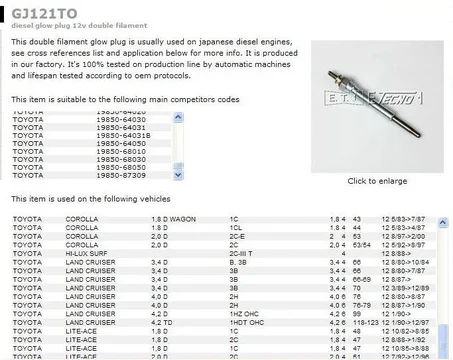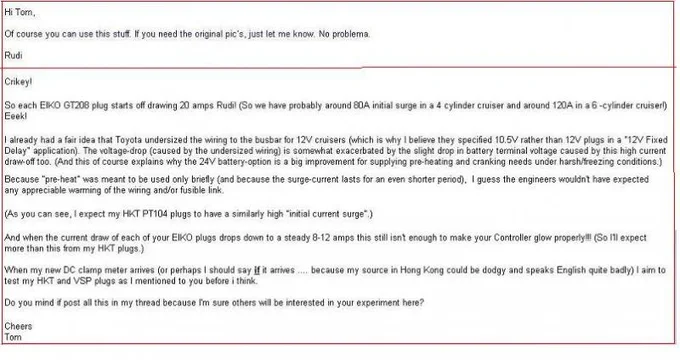- Thread starter
- #61
.....Possible cause of first set to go is alot of on off on off with key .....
I agree. (That would probably have caused successive fast-heat cycles with very little cool-down time inbetween - which would probably have blown the plugs by overheating them.)
Excellent thread going on here.
Is there a way of speeding up the glow process on a glow contoller system?
Im not impatient, but my missus sure is, to a point where she wants me to get something newer and not such a pita for her.
Converting to super glow was my idea, but is a nightmare wiring wise. Simply putting 6v plugs in also it seems a bad idea..
(10/83 2H motor, using original H motor glow controllers and with 8.5v plugs currently fitted)
If she can't be educated on the coolness factor of having Glow Controller pre-heat Dave... just buy her an old Honda Civic and ban her from driving the BJ.
Seriously though, I don't think you can run an OEM Glow Controller with pre-heat times faster than around 15 seconds while having it functioning/glowing properly.
You could of course experiment with your own unique mix of "controller coil length" and "different plugs". But then I think the big hurdle would be in achieving long-term reliability.
Another alternative is to install a Wilson switch (with an idiot light) and try a set of "fast-heating twin-filament plugs" (that apparently allow fast pre-heat and then automatically increase their own resistance for protection against melt-down).
Perhaps these plugs with a Wilson Switch?:

(It would be a bit of an experiment because I'm not aware of anyone have used those plugs before. They apparently have a nominal voltage of 12V ... which is interesting in itself.)







 This makes me wonder why your EIKO GT208 plugs won't glow your controller Rudi. (Because 33A is considerable less than 4 x 10A .... But then I know the accuracy of your meter was more questionable than mine.)
This makes me wonder why your EIKO GT208 plugs won't glow your controller Rudi. (Because 33A is considerable less than 4 x 10A .... But then I know the accuracy of your meter was more questionable than mine.)
